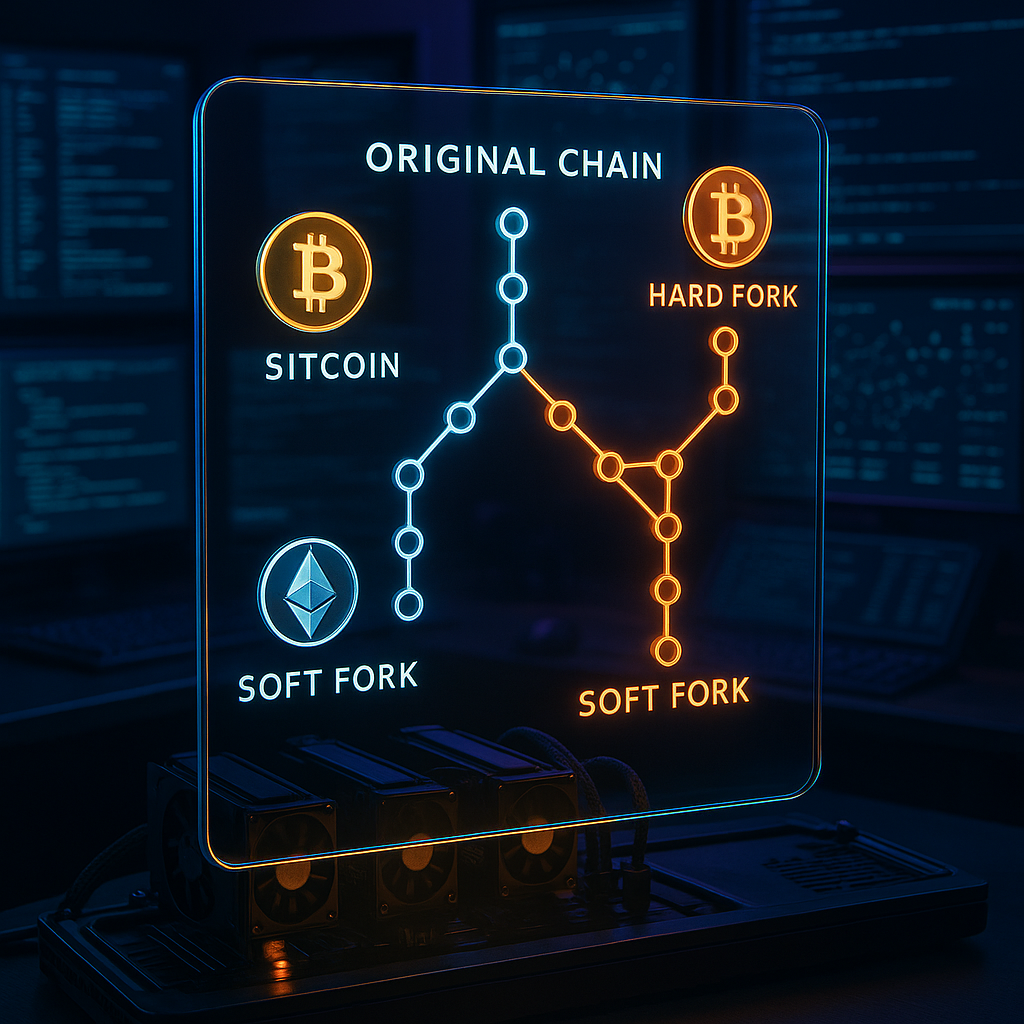Key Takeaways
- Hardware wallets provide superior protection with true offline storage. By keeping private keys isolated from internet-connected devices, hardware wallets effectively neutralize attack vectors such as reentrancy and oracle attacks. These threats frequently exploit vulnerabilities in connected software environments.
- Software wallets face ongoing exposure to smart contract and oracle manipulation risks. Because they operate on internet-connected devices, software wallets remain inherently more vulnerable to sophisticated exploits. These include attacks that target flaws within DeFi protocols and manipulated data feeds.
- Reentrancy attacks do not target wallets directly, but wallet choice dramatically impacts risk. Although reentrancy attacks occur at the smart contract (application) layer, using a hardware wallet adds an important layer of defense. Every transaction requires physical confirmation from the user, greatly reducing the chance of malicious contract approvals or unauthorized transactions.
- Oracle attacks manipulate data feeds but can be mitigated through robust wallet verification features. Oracles can supply false prices or tampered information to smart contracts, opening the door to severe exploits. Hardware wallets address this risk by requiring users to physically review and approve transactions before they are broadcast, helping to minimize losses due to oracle manipulation.
- The method of private key storage remains the cornerstone of crypto security. Hardware wallets safeguard private keys offline, protecting them from malware, phishing, and unauthorized access. In contrast, software wallets, due to their constant online presence, increase your exposure to various cyber threats.
- No wallet type provides absolute immunity. Operational security and vigilant user behavior remain essential. Even the best hardware wallet cannot protect against losses if users approve malicious smart contracts or misunderstand transaction prompts. Fully understanding potential threats and developing cautious transaction habits is critical to maintaining security.
- Balance convenience with advanced threat protection. While software wallets offer speed and accessibility, they do so by sacrificing their depth of security. For significant asset holdings or frequent interaction with DeFi protocols, cold storage through hardware wallets is strongly recommended to optimize protection.
Security in cryptocurrency demands more than simply choosing a “best” wallet. It is about aligning wallet features with your personal threat landscape, especially as attacks on smart contracts and oracles constantly evolve. In the sections ahead, we will break down the anatomy of these attacks, clarify which wallet features truly matter, and share practical strategies to strengthen your digital asset security across DeFi, blockchain, and other use cases.
Introduction
Discussions about crypto wallets often center on convenience and user experience. Yet, the critical battleground lies in defending against sophisticated threats like reentrancy and oracle attacks. These are risks capable of draining millions not by exploiting simple software flaws, but by targeting how wallets interact with complex smart contracts and live blockchain data.
Deciding between a hardware and software wallet is far more than a matter of preference. It is a foundational question about which option offers genuine protection against next-generation exploits. By exploring the underlying technologies of both wallet types (including private key management and the nature of transaction approvals), you will learn which security features deliver authentic defense against the emerging risks reshaping DeFi and digital asset storage.
As the landscape of crypto security evolves, the true test for any user is not surviving simple phishing schemes but responding to intricate attacks on contracts and data feeds. Let’s examine how wallet security must advance and which tools, techniques, and behaviors will position you to protect your crypto assets amid the increasingly complex realities of Web3.
Stay Sharp. Stay Ahead.
Join our Telegram Group for exclusive content, real insights,
engage with us and other members and get access to
insider updates, early news and top insights.
 Join the Group
Join the Group
Core Security Architecture Analysis
Fundamental Design Differences
A hardware wallet employs a physically secure element (a specialized chip) dedicated solely to storing private keys. This secure element remains completely separated from internet-connected devices, ensuring an “air gap” that thwarts almost all forms of direct digital attack. Transactions are signed using encrypted channels that never expose the private key to the host device, augmenting security.
Software wallets, though equipped with strong cryptographic protocols, ultimately depend on general-purpose computers or smartphones for private key storage. Even with robust software defenses, private keys are susceptible to malware that can reach into system memory or intercept keys while they are processed. The security in this model rests on logical, rather than physical, separations and is only as strong as the host operating system.
Notably, state-of-the-art hardware wallets leverage secure elements certified to EAL5+ standards, offering military-grade resistance to tampering. Sensors can detect unauthorized access attempts, triggering an automatic wipe of sensitive data. This level of hardware-enforced security is largely unattainable with software-only wallets.
Attack Vector Analysis
Appreciating the distinction between hardware and software wallets becomes particularly relevant when evaluating common and emerging attack vectors.
Reentrancy Vulnerabilities
Hardware wallets shield users from reentrancy attacks by requiring physical confirmation for each transaction. This design acts as a crucial “circuit breaker.” Malicious smart contracts cannot silently trigger multiple unauthorized transfers since no transaction proceeds without the user’s direct input via the wallet device. Users gain clear, step-by-step visibility and control.
In contrast, software wallets often depend on automated scripts or programmatic alerts to detect suspicious contract activity, but these mechanisms are susceptible to being bypassed by advanced exploits. The 2016 DAO hack, which resulted in a significant $60 million loss, is a stark reminder of the stakes involved.
Oracle Attack Resistance
Hardware wallets further strengthen security against oracle attacks through several mechanisms:
- Secure display of transaction details that enable the user to verify critical data before approval
- Manual, physical verification for all asset transfers and price-sensitive actions
- Optional rate-limiting features that limit the number of transactions processed in a given timeframe
Software wallets, however, are more reliant on off-chain or in-app data feeds that may not present information in a fully secure, user-verified manner. The Harvest Finance exploit in 2020, which led to a $34 million loss via flash loan and oracle manipulation, demonstrates the devastating impact these vulnerabilities can have when robust hardware-based checks are lacking.
These types of attacks are not limited to DeFi or trading platforms. Healthcare applications integrating blockchain-based medical record access, for example, could be exposed if oracles feeding diagnostic data are compromised. In the financial sector, similar risks arise through manipulated pricing feeds in portfolio management systems, and in the environmental sciences, manipulated sensor data could disrupt automated resource allocation.
Connectivity and Communication Security
Network Attack Surface
Hardware wallets are designed to carefully limit their exposure to external networks:
- They only interact via explicit user-initiated protocols, such as USB or Bluetooth, using deterministic transaction signing.
- By employing minimal and vetted communication channels, the risk of data leakage or interception is drastically reduced.
- Firmware and device authenticity are routinely verified before any operation.
- Anti-spoofing techniques minimize the risk of counterfeit device attacks.
In comparison, software wallets face a much broader attack surface:
- Persistent online connectivity exposes software wallets to remote takeovers or interference.
- Their reliance on the underlying host’s security means vulnerabilities in the operating system or other installed applications can potentially expose private keys or transaction data.
- Broader dependencies (including browser plugins and third-party APIs) introduce risks of “man-in-the-middle” attacks and external exploits.
Industries beyond crypto trading are at risk as well. In healthcare, compromised communication channels in patient data wallets could result in unauthorized data release. In legal contract management, persistent network connections could leave sensitive agreements vulnerable to interception. These examples illustrate why minimizing attack surfaces is crucial beyond just financial use cases.
Key Management Protocols
The protocols for key generation, storage, and backup are another area where hardware and software wallets diverge significantly.
Hardware Wallet Approach
- Utilizes physical sources of entropy for generating cryptographically secure private keys.
- Stores keys inside a secure element, unreachable by external software or processes.
- Enables offline backup strategies, including recovery phrase generation and hardware-backed multi-signature schemes.
- Supports the use of separate hardware for shared custody or multisig governance, expanding beyond individual asset security.
Software Wallet Approach
- Depends on software-based entropy sources, which may be less random or vulnerable to operating system flaws.
- Keys and backups are typically stored in system-managed storage, creating potential access points for malware or unauthorized users.
- Vulnerabilities arise when users store seed phrases or backup files in cloud services, email accounts, or open devices.
- Multi-signature features primarily run in virtual environments, often lacking hardware protection.
These architectural distinctions are not just theoretical. When Binance hot wallets were breached for over $40 million in 2019, hardware wallet users were unaffected. By maintaining a clear separation between signing operations and online systems, hardware wallets provide reliable insulation against large-scale attacks. In contrast, software wallet breaches are frequently fueled by poor key management practices and network vulnerabilities.
Stay Sharp. Stay Ahead.
Join our Telegram Group for exclusive content, real insights,
engage with us and other members and get access to
insider updates, early news and top insights.
 Join the Group
Join the Group
Advanced Security Considerations
Firmware and Update Security
Effective hardware wallets enforce strict update protocols. Firmware updates must be signed with manufacturer-approved keys, and the device typically refuses to run unsigned or modified code. Some hardware wallets include rollback protection, ensuring attackers cannot “downgrade” firmware to an unpatched version as part of an exploit. Every major update also requires user confirmation, preserving control with the wallet owner.
Software wallets, conversely, rely on the host system’s own update routines, which can be subject to supply chain compromise. Attackers sometimes infiltrate software update servers or distribution platforms, modifying wallet binaries before they reach end users. The 2020 personal data security breach at Ledger, although alarming, did not compromise actual wallet security because the hardware wallet’s secure element prevented unauthorized access even in the event of an external breach.
Beyond crypto, these update security principles matter in any field using signed digital contracts. Whether updating medical device firmware in healthcare, securing autonomous vehicle software, or distributing educational content through blockchain-based credentialing platforms, these concerns are real.
Smart Contract Interaction Safety
The distinction between wallet types becomes even more pronounced in how they interact with smart contracts.
Hardware Wallet Protections
- Enforces physical review and confirmation of every contract interaction. Users can see exactly what they are agreeing to before approving.
- Many devices run built-in sanity checks on transaction data, flagging unusual operations or unexpected contract requests.
- Automated safety analysis can detect and warn against common malicious patterns, improving the odds of avoiding dangerous approvals.
For readers seeking a deeper understanding of how to apply such secure approaches, our page on trading strategies explores best practices in operational due diligence and risk mitigation.
Software Wallet Vulnerabilities
- Often lacks direct or robust contract review features, leading users to “blind sign” transactions based on insufficient or unclear prompts.
- Increased dependence on browser plug-ins and third-party verification tools introduces more complexity and room for error.
- Automated attack scripts and malicious ads can exploit these weaknesses, causing users to unknowingly approve high-risk operations.
A stark illustration is the 2021 Cream Finance hack, where hardware wallet users with enabled transaction review features were able to catch and block suspicious requests. Software wallet users, meanwhile, succumbed more easily to automatic attacks, highlighting the long-term importance of investing in hardware-backed safety.
These risks extend to other sectors as well. Legal professionals automating contract signing, educators distributing blockchain-certified transcripts, and environmental scientists running resource allocation contracts can all benefit from enhanced confirmation and verification layers in their blockchain tools.
Conclusion
The evolving landscape of digital asset security makes the choice between hardware and software wallets a matter of strategic importance. This extends beyond convenience into the realm of advanced threat management. By storing private keys within robust, physically isolated elements and requiring user-driven confirmation for transactions, hardware wallets set a new standard in defense, blocking reentrancy exploits, oracle manipulations, and sophisticated network-based attacks.
In contrast, software wallets, while offering accessibility and speed, cannot fully escape their dependence on the underlying host system, leaving users exposed to a wide spectrum of cyber threats, from malware to phishing scams and supply-chain manipulation. Real-world events across industries, from hacked exchanges in finance to compromised medical device updates in healthcare, confirm that architectural fundamentals matter.
For those new to advanced concepts like reentrancy or oracle manipulation, our technical analysis hub provides foundational explanations of relevant DeFi risks.
Ultimately, responsible participation in the growing decentralized economy demands both the right tools and informed habits. Investing in hardware wallet solutions offers essential protection for substantial holdings, particularly when interacting with smart contracts or managing sensitive data. Yet, no wallet is entirely foolproof. Ongoing user education and vigilant transaction practices remain vital for securing your assets in Web3, DeFi, and blockchain-powered sectors.
To further strengthen your crypto security posture, cultivating a resilient trading mindset and disciplined behavioral routines is key.
Looking forward, as attackers innovate and the complexities of blockchain applications grow, those who pair strong hardware security with continual learning and operational discipline will lead in the next era of digital asset management. The real opportunity lies not just in adopting new technology, but in mastering its safe and strategic use. This is how you ensure you transform from a cautious newcomer into a confident, empowered participant in the decentralized future.





Leave a Reply